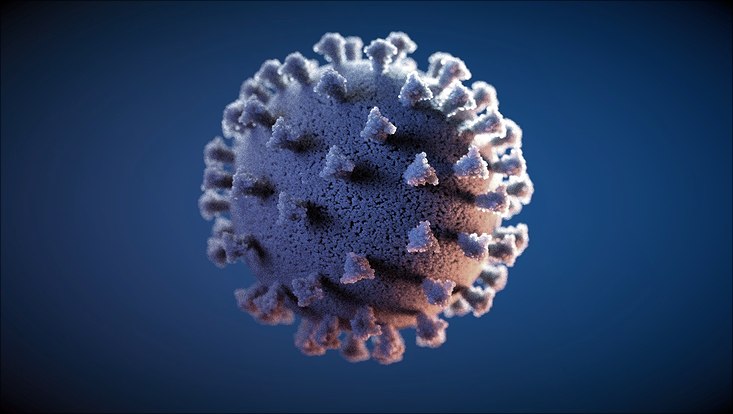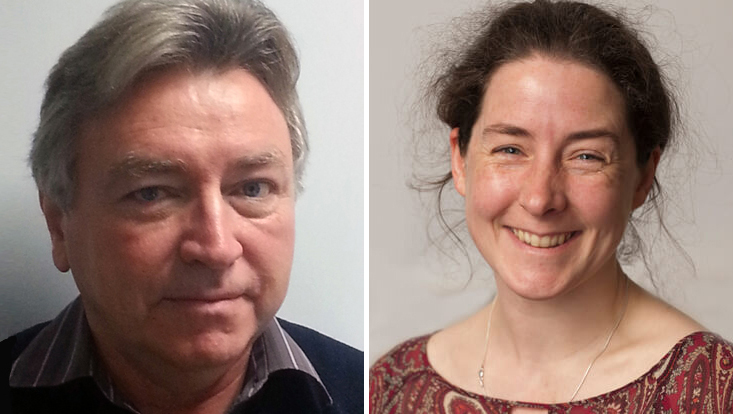X-ray screening of key virus proteinResearchers identify promising candidates for COVID drugs
2 April 2021, by DESY/Red.

Photo: DESY/SciComLab
An international team of researchers, which on behalf of Universität Hamburg is coordinated by Prof. Dr. Dr. Christian Betzel and Prof. Dr. Arwen Pearson, has identified several candidates for drugs against the coronavirus SARS-CoV-2 using DESY´s X-ray lightsource PETRA III. In addition, a new binding site on the virus was discovered. The results were published online in the journal "Science".
In contrast to vaccines, which help healthy people to defend themselves against the virus, drug research develops medicines that can slow down or stop the reproduction of the virus in the body of people who are already infected. One promising target is the main protease of SARS-CoV-2, an important protein of the virus. If the main protease could be blocked, it might be possible to interrupt the virus replication cycle.
The researchers, under the leadership of Deutsches Elektronen Synchrotron DESY, tested almost 6000 known active compounds that already exist for the treatment of other diseases in a relatively short period of time by using a high-throughput X-ray screening approach. As part of this effort the university groups produced large quantities of protein, helped grow crystals, harvested crystals prior to data collection and helped build a database that tracked each compound from start to finish in the massive screening experiment.
Three-dimensional structure displayed with atomic precision
DESY´s PETRA III facility houses state-of-the-art experimental stations for structural biology where the three-dimensional structure of proteins can be imaged with atomic precision using X-rays. “We first investigated, whether and how the compounds “dock” to the main protease,” says Dr. Arwen Pearson, professor of biophysics and a researcher in the Cluster of Excellence “CUI: Advanced Imaging of Matter.“ Due to the high automation at the PETRA III stations P11, P 13 and P14, measuring each of the more than 7000 samples only took a few minutes. “Using this high-throughput method, we were able to find a total of 37 active compounds that bind to the main protease,” says Alke Meents from DESY, who initiated the project with Christian Betzel in March 2020.
In a next step, the researchers at the Bernhard Nocht Institute for Tropical Medicine investigated whether these active compounds inhibit or even prevent virus replication in cell cultures and how well they are tolerated by human cells. This reduced the number of candidate active compounds to seven, two of which stood out in particular.
New and promising binding site discovered
In their drug screening using protein crystallography, the researchers did not examine fragments of potential drugs, as is usually the case in such screening campaigns, but instead complete drug molecules. In the process, however, the team of more than 100 scientists also discovered something completely unexpected: a previously unknown binding site on the main protease. “It was not only a nice surprise that we were able to discover a new drug binding site on the main protease, but that one of the two promising drug candidates binds precisely to this site,” says Dr. Dr. Christian Betzel, professor of biochemistry and molecular biology at Universität Hamburg and also a member of “CUI: Advanced Imaging of Matter”.
The preclinical studies with the two promising compounds pelitinib and calpeptin are currently being conducted at the Institute of Biomedical Sciences of the University of São Paulo (USP), with which UHH has a long-standing collaboration in the field of structural infection biology and where Betzel is a visiting professor. "We arranged the possibility to do preclinical studies in advance in March 2020, so that we wouldn't lose any time if our screening programme was successful," Betzel said. The studies are expected to last 5 months, after which further clinical testing will be necessary.
International and multidisciplinary research project
This massive project involved researchers from the Universities of Hamburg and Lübeck, DESY, the Bernhard Nocht Institute for Tropical Medicine, the Fraunhofer Institute for Translational Medicine and Pharmacology, the Leibniz Institute for Experimental Virology (HPI), the European XFEL, the European Molecular Biology Laboratory EMBL, the Max Planck Society, the Helmholtz-Zentrum Berlin and other institutions.
In addition to the groups of Prof. Dr. Christian Betzel and Prof. Dr. Arwen Pearson, Prof. Dr. Henry Chapman (Department of Physics, DESY), Dr. Thomas J. Lane (CUI-Young Investigator Group Leader, CFEL, DESY) as well as Prof. Dr. Henning Tidow and Prof. Dr. Tobias Beck (both from the Department of Chemistry) contributed their know-how in the fields of X-ray crystallography, protein design and structural biology. Prof. Dr. Matthias Rarey (Center for Bioinformatics at the Universität Hamburg) contributed his expertise in modeling and energy calculations.
Original publication:
X-ray screening identifies active site and allosteric inhibitors of SARS-CoV-2 main protease; Sebastian Günther, Patrick Y. A. Reinke, et al.; „Science“, 2021; DOI: 10.1126/science.abf7945

